Behind the photos: The supporting roles
Starting out with the simplest support, we have a bean bag. This is typically used folded in half with the lens on top of it to steady the lens and camera. More elabrate ones can be found with integrated tripod mounting screws.
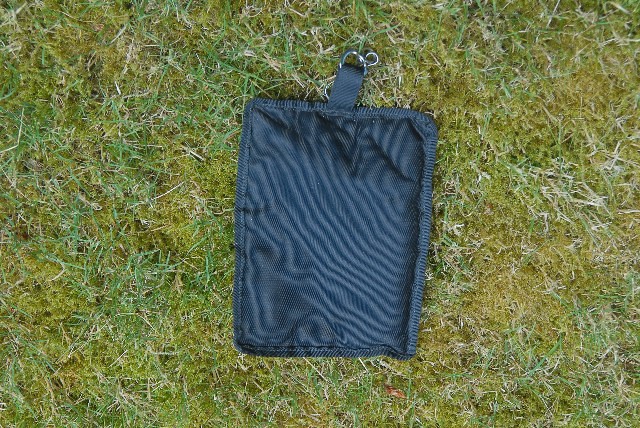
Next up, we have the monopod. This is primarily used for sports photography, where portable support for heavy fixed telephoto lenses and telephoto zoom lenses in low light is essential. The monopod can be mounted to the tripod collar found on most professional fixed telephoto lenses and telephoto zoom lenses.
Mine is equipped with a ball head, although in actual use, the ball head wouldn't be adjusted unless the camera was mounted to it directly, rather than via the tripod collar on the telephoto lens. When mounted on the telephoto lens, the tripod collar would be rotated for vertical shots, as it doesn't affect the position of the camera. Using the ball head for vertical shots changes the position of the camera in a somewhat awkward manner, which also lowers the hight of the camera.
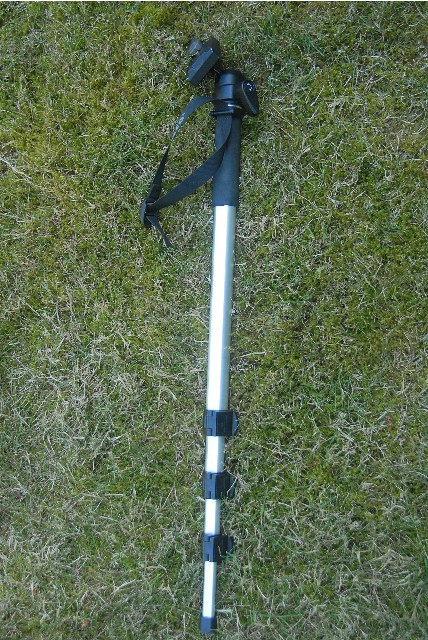
Next, we have a mini tripod and extension, this is useful for low angle shooting but with more solid support than the beanbag. The extension adds a bit of extra height, that will almost match the lowest setting on the full size tripod. Like the monopod, this is equipped with a ball head, which is much more useful on the mini tripod.
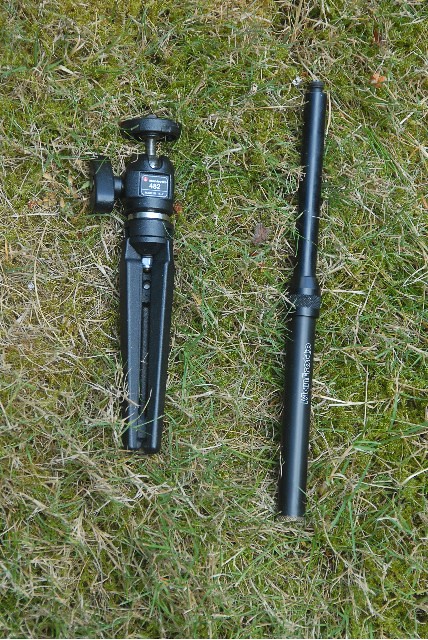
The full size tripod, of course, has greater height and weight, and is used in most situations where support is required. Mine has a number of useful options, including the ability to spread the legs wider than normal for lower height, and the central column can be pulled out and inverted for vertical shots. The head is a pan and tilt type, not quite as flexible as the ball head, but adequate for most situations. The leg locks are of the flip type, which is more positive than the collar type, and it's easy to confirm that the legs are locked down.
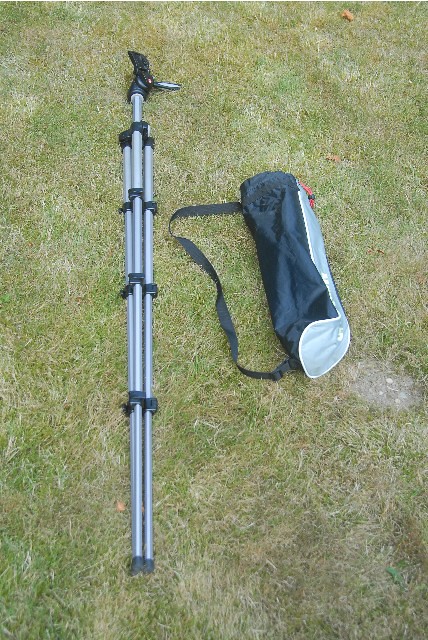
And now, on to the tripod accessories. This is a quick release (QR) plate and adapter, which makes attaching the camera to supports quick and easy. The adapter is used for allowing the QR plate to be used with supports that do not have an integrated QR plate system, such as the mini tripod, for which this particular one is used with.
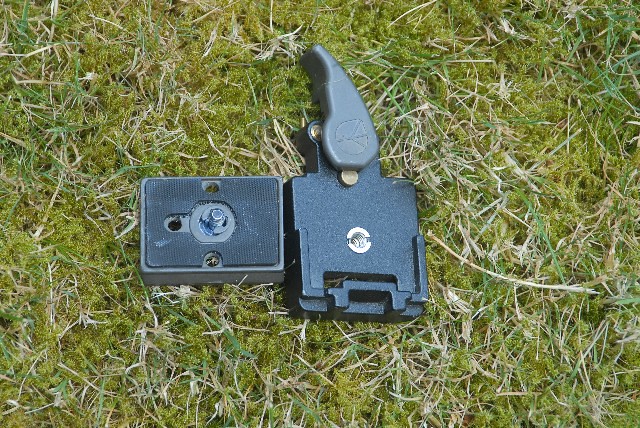
Finally, we have the macro focusing rail. The macro focusing rail is used when doing macro work, when you want to keep the reproduction rate, such as 1:1 (life size), set at a fixed rate. You then move the camera back and fourth using the macro focusing rail to focus on the specific subject, rather than changing the lens focus ring (which affects the reproduction rate).
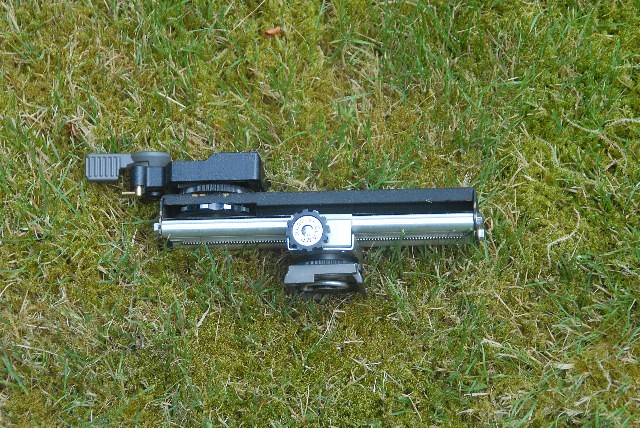
Comments
Post a Comment